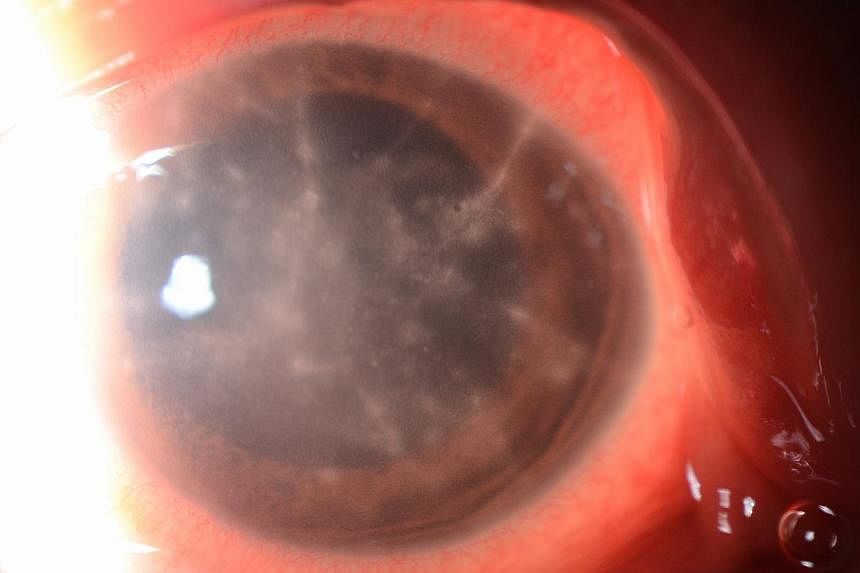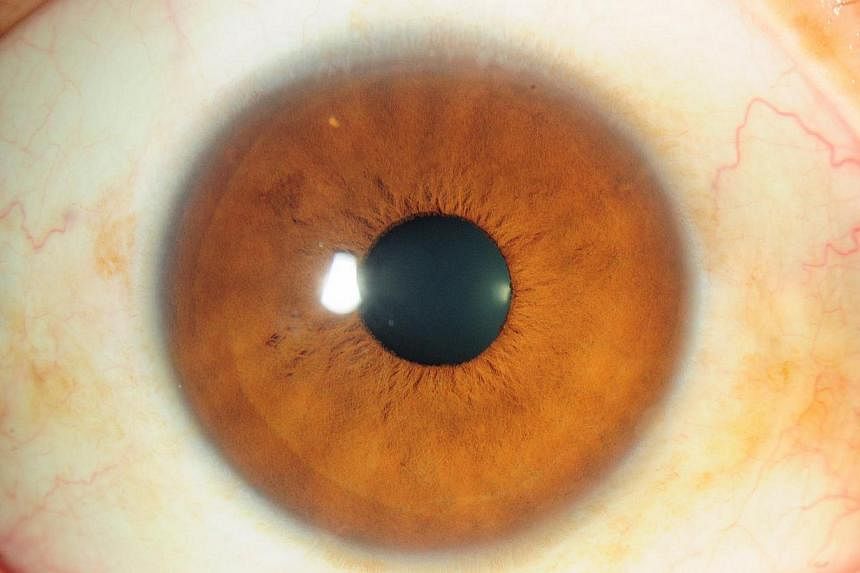Each day, more than one contact lens wearer here ends up with a corneal infection. Most cases are mild but some are so bad that a transplant is needed.
In 2013, the public sector alone treated a total of 531 corneal infections, of which 362 were contact lens related, and hence avoidable, said Professor Donald Tan, a senior ophthalmologist at the Singapore National Eye Centre (SNEC).
It is not known how many corneal infections are treated in the private sector.
Coloured lenses are especially a concern, as they accounted for 92 infections here in 2013.
Prof Tan said eye doctors at the SNEC hear all kinds of horror stories: poor-quality lenses bought over the Internet where there is little quality control, dye leaking out of the lens into the eye, and children who swop lenses they have been wearing to try a different colour.
As coloured lenses are not medical devices but cosmetic, there is little control over their quality.
A Singapore-led year-long study conducted from end 2012 till early last year across eight Asian territories looked at a total of more than 6,500 eye infections.
Among them, Singapore had the most corneal infections caused by lens wear at 68 per cent, followed by Taiwan where the figure is around half that.
According to industry numbers, about 200,000 people here wear contact lenses.
Besides coloured lenses, also of concern to doctors are the hard lenses worn overnight by the young to reshape the cornea so that they do not need to wear spectacles or lenses in the day.
Prof Tan, who specialises in cornea and external eye diseases, said public sector health institutions treated five infections in 2013 caused by the use of such hard corrective lenses called Ortho-K.
Last year, the SNEC alone saw three cases of eye infection caused by use of these lenses, which are used to correct short-sightedness.
Prof Tan said these lenses - in order to reshape the eyeball - "squash the cornea, causing little breaks on the surface so wearers are more prone to infections".
Wearers of Ortho-K lenses are 13 times more likely to get an eye infection than an adult wearing ordinary hard lenses in the day, he said.
The eye centre has been seeing Ortho-K infections in young children since 2001. One problem, said Prof Tan, is that eye hygiene might be poorer in children, who are the target of Ortho-K corrective lenses.
Another possible reason is that the lenses are worn overnight, when the eyes are closed, so less oxygen gets through.
For these children, instead of getting better eyesight, they often end up with a 10 per cent to 40 per cent vision loss instead.
Infections caused by Ortho-K lenses tend to be more severe and might lead to permanent scars in the eye which would affect vision, said Prof Tan.
These have led to eye transplants in other countries, but not in Singapore so far, he said.
salma@sph.com.sg facebook.com/ST.Salma


